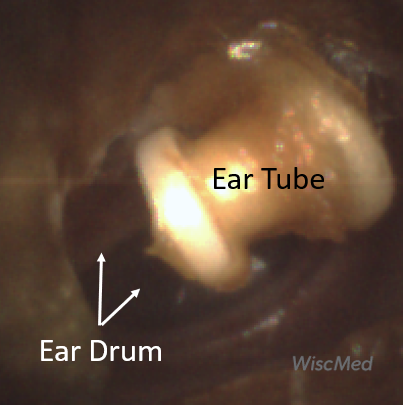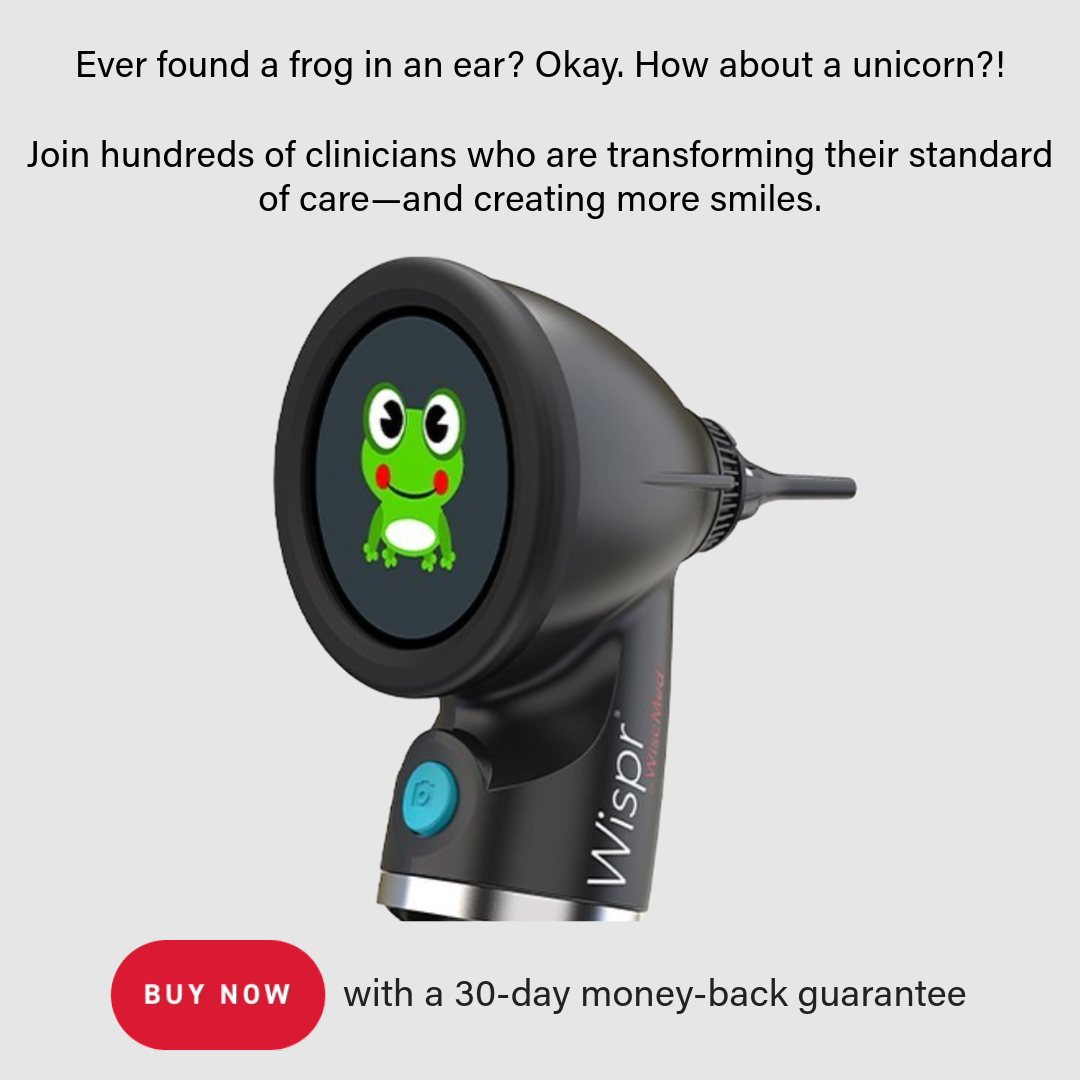
Extruded Ventilation Tube – January 18, 2024
A five-year-old female presents to her pediatrician for a routine visit. The mother reports that the child has felt well for the past several months. She expresses relief that she has not had to make any emergency visits for ear pain which had been common in the past. During the exam, the following image of the child’s ear was obtained with the Wispr digital otoscope.
Which of the following is true?
- The child placed a bead in her ear which should be removed.
- This object has likely been in the ear for six months.
- Antibiotics should be considered along with hydrogen peroxide drops.
- Referral to ENT is indicated.
Answer: 2. This object has likely been in the ear for six months.

The child has an extruded tympanostomy tube, also known as an ear tube or a ventilation tube. These tubes are inserted across the ear drum in patients that have recurrent middle-ear inflammation, for example from acute otitis media (AOM). Tubes serve to equalize the pressure on both sides of the ear drum. The Eustachian tube normally equalizes pressure across the ear drum. However, in young children, the Eustachian tube is more horizontal than in adults. This makes it susceptible to inflammation which can block its “noodle” like structure and cause pressure to build up in the middle ear. Tubes are placed to relieve the pressure and allow the inflammation fluid to drain.
After about 6 months, the tubes are extruded from the ear drum by the normal action of cell replication. They end up in the ear canal, as seen here. They would normally exit the canal completely in the normal course of daily activities. In this case, there is cerumen (ear wax) that is keeping the tube in the canal. Removal is easily facilitated with forceps.
The extruded tubes can appear like a foreign body. Children are famous for putting items in their ears. Looking closely, it’s clear that this is an ear tube given the cylindrical shape and the flanges on both ends. The eardrum is not seen in this image as the tube is blocking the view. After removal of the tube, the ear can be reinspected for signs of infection. Given the child has no complaints, it is unlikely that she will have ear inflammation and require antibiotics. Hydrogen peroxide drops would only be considered if the tube was still installed in the ear drum and appeared occluded. There is no need to involve ENT in this normal situation.








































































































































































































